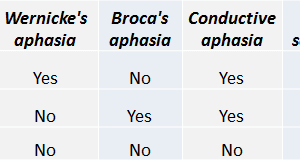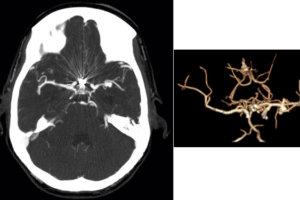
Patients with expressive aphasia have difficultly speaking fluently, although they can understand what other people say when they are spoken to.
On exam this manifests as:
- Patients can follow commands (as long as that does not require speaking).
- Depending on the severity of the aphasia, patients have difficulty producing speech ranging from some word finding difficulty to being completely mute.
Expressive aphasia is most commonly caused by occlusions of the superior (anterior) branch of the left middle cerebral artery.
Lesions of pars opercularis and pars triangularis of the inferior frontal gyrus (Broca’s area) produce a subtype of expressive aphasia known as Broca’s aphasia. With this aphasia there is the added symptom of not being able to repeat a phrase.
Lesions of motor cortex around Broca’s area that do not directly damage Broca’s area produce an expressive aphasia in which repetition is intact. This is a transcortical motor aphasia, one example of which is supplementary motor area aphasia that sometime develops when the SMA is damaged with infarction of the left anterior cerebral artery territory.
Expressive aphasias are often “frustrating to the patient” because while the patient can understand everything that is being said to and of them, they are unable to express themselves to their physician or family.
The expressive aphasias are highlighted below using classification based on three screening questions.





